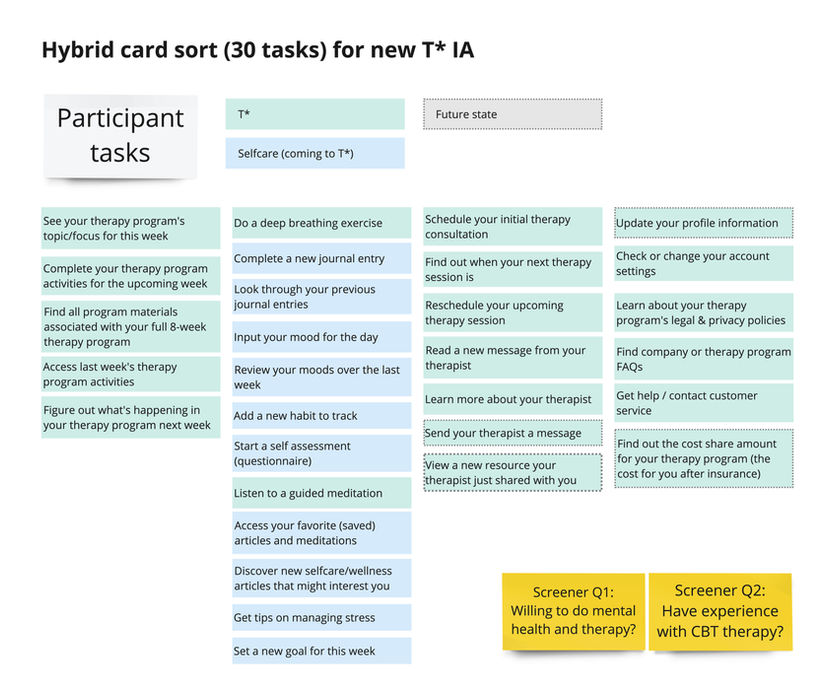AbleTo
Delivering a consistent user experience across a suite of mental health care products
The problem
AbleTo offers three mental health care programs (self care, coaching, and therapy) — each with it's own product experience. Coaching and therapy programs offer 8-weeks of provider-led care, while self care is self-guided and ongoing. With three separate digital experiences, AbleTo participants could not easily transition between products to meet their changing mental health needs, or in the case of therapy participants, get support to maintain their mental health gains once their provider-led care ended. We needed to redesign and unite the UX, UI and IA across all of AbleTo's consumer experiences. As the lead designer for therapy products, I was responsible for executing on this new strategy for therapy programs.
"How can I keep making progress now that my therapy sessions are over?"
"We want participants to be successful in whatever program they're in!"
Final therapy program designs (process below)
Final designs often appear simple, but the process is not. How did we get here?
FIRST
Fostering consumer alignment & defining project goals
When I came into this project, there was a strong vision for a unified consumer product experience centered around a universal IA, but not a lot of clearly defined goals or requirements. To carry this vision forward into execution, I worked with design & product leaders to define and document our design, business and user goals.

NEXT
Auditing the current state(s) & digging further into the scope of work to be done
In order to understand how to proceed redesigning the therapy programs, I first needed to understand the current experiences for all consumer products. This was more complicated than meets the eye, since there are a number of therapy programs (T+, T360, and Depression Interactive) — in addition to the self care and coaching products. Once I understood the broader landscape, and differences of experience, I was able to identify the UX, UI, new feature & content impacts to therapy programs.
THEN
Validating the new IA & testing two divergent design models
The new, universal IA was determined before I joined this work, but I decided I run a hybrid card sort study anyways to validate the new categories for therapy programs. This study consisted of 30 user tasks representing core therapy activities, as well as new features and functionality coming into therapy programs from self care. Afterwards, I began re-working the program UX, arriving at two distinct concept models. To determine which model to move forward with, I ran two unmoderated Maze tests that included 6 core therapy tasks, ease of use rankings, and a few open-ended feedback questions. While both design concepts performed fairly well, the time on task for concept #2 was lower for every task performed, with one less click to completion for every one — making it the clear winner.
AND ALSO
Updating the UI & migrating to a CMS (Contentful)
While finalizing the new UX, I also collaborated with the broader consumer design team on new UI components. The self care team has recently designed new 'activity card' UI components that needed to be adapted for therapy program activities. Two additional card components (informational & appointment) were also created to fit within this new system to fulfill digital program needs for therapy. As part of this effort, we transitioned to Contentful. While the initial build out of the new system required extra work and learnings, the long-term benefits of shared consumer product team use and easy, low-effort content updates were well worth it.
Final thoughts...
This was a challenging project to take on as a brand new team member, which required a rapid ramp up of AbleTo design & product knowledge. I delivered over 100 screens accounting for all therapy program variants, web & mobile app experiences, as well as changing many program states (welcome, cancelled, graduated etc).
The completion and launch of this work is a milestone for AbleTo's consumer products, and a huge win for our participants. In addition to having access to more and better tooling, we hope that these more seamless program transitions better support the positive trajectory and longevity of our participant's mental health gains.



























